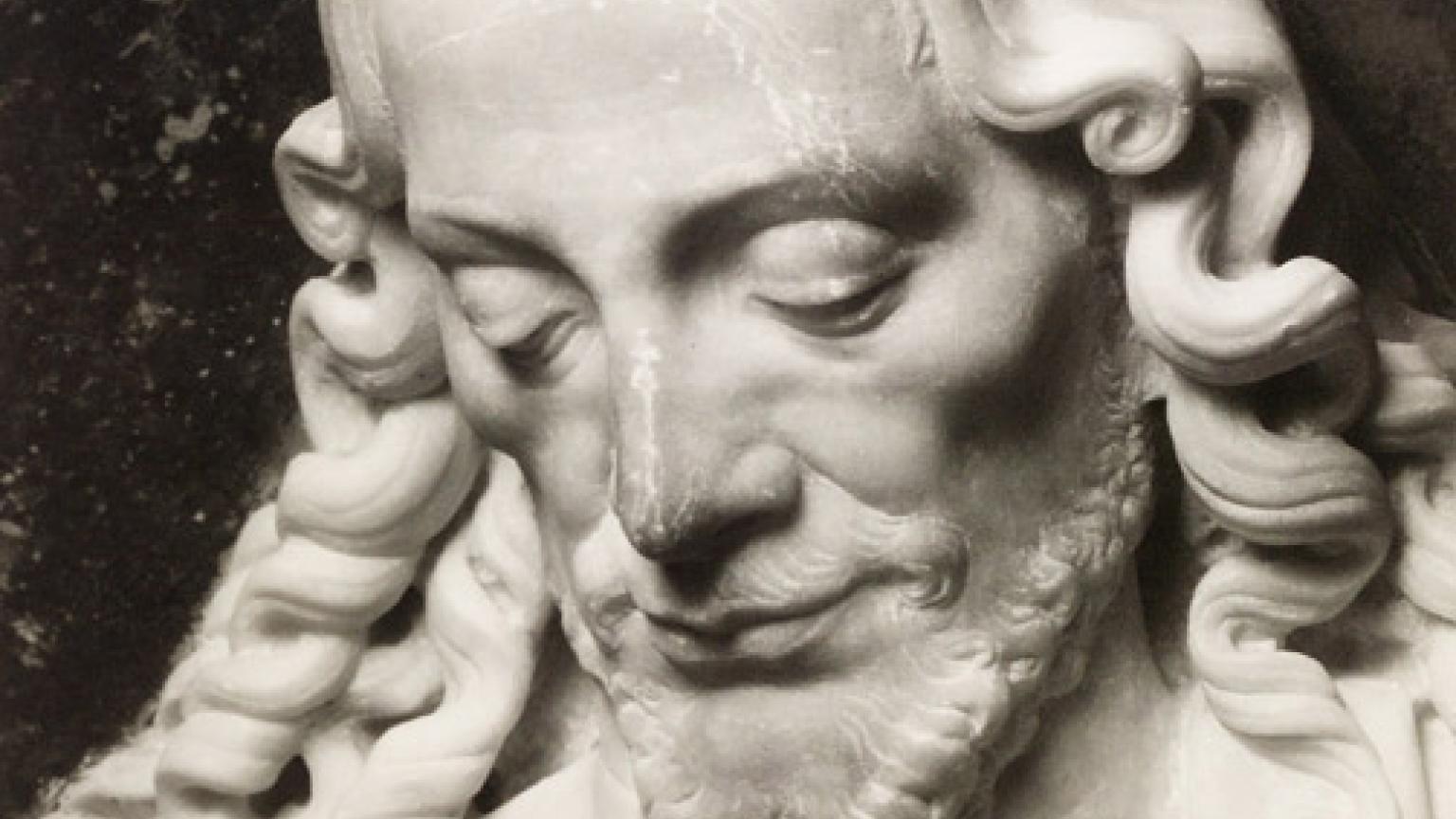Past Exhibition
In the Library: Verrocchio, Connoisseurship, and the Photographs of Clarence Kennedy

Details

Open Monday–Saturday from September 16, 2019–January 10, 2020, except January 4.
Clarence Kennedy (1892–1972), an art historian at Smith College and self-proclaimed “scholar-photographer,” revolutionized documentary art photography with subtle and illuminating details of Italian Renaissance sculpture. The limited photographic resources available for teaching art history in the early 1920s led Kennedy to pursue photography, eventually resulting in his seven-volume photographic series Studies in the History and Criticism of Sculpture. Sculptors with large workshops, such as Andrea del Verrocchio (c. 1435–1488) and Desiderio da Settignano (c. 1429–1464), particularly inspired him. His exquisitely detailed photographs allowed him to compare motifs, methods, and styles to propose distinctions between the master’s hand and the work of his assistants.
The first six volumes in Kennedy’s Studies were portfolios of loose photographs, averaging 50 plates each without accompanying text. These included surveys on the ancient Greek Erechtheion and the Siphnian Treasury, but Kennedy later turned to quattrocento Florentine subjects with volumes on portraiture and relief sculpture, as well as monographic surveys of Desiderio’s Marsuppini Tomb (Santa Croce) and Tabernacle of the Sacrament (San Lorenzo). He also planned and partially completed a portfolio on the Chapel of the Cardinal of Portugal by Antonio Rossellino (San Miniato al Monte).
In 1932 Kennedy published volume seven: The Unfinished Monument by Andrea del Verrocchio to the Cardinal Niccolò Forteguerri at Pistoia, which unlike its predecessors is bound and contains text. The text was written by his student Elizabeth Wilder, originally as her master’s thesis, and was supported with documents discovered by Italian art historian Pèleo Bacci. Kennedy photographed the monument from 1930 to early 1931. The result focused new attention on a major work long dismissed as a workshop production.
The Forteguerri cenotaph is nearly three stories high, with life-size figures including Christ surrounded by four angels with the virtues Faith, Hope, and Charity positioned above putti and a bust of the cardinal. Verrocchio received the commission in 1476 but left it incomplete in the hands of his workshop assistants when he moved to Venice in 1486 to work on a different commission. The monument’s precise location in the Pistoia Duomo was not decided until after Verrocchio’s death, and its initial installation was significantly altered in the 16th and 18th centuries. Charity, the bust, and the flanking putti are all later additions. These modifications, as well as the monument’s placement high on the wall in a dark aisle, made it nearly impossible to study properly before Kennedy’s campaign.
Photographing marble sculpture in situ requires a light source bright enough to illuminate the sculptures without obliterating the details and producing dark shadows. Kennedy solved this problem with his “pencil of light” method, where a light source was moved continuously over the object during a long exposure. This process revealed details that allowed Kennedy, Wilder, and subsequent scholars to study and compare the details within the monument and throughout Verrocchio’s oeuvre.
The Gallery would like to thank the Harvard Fine Arts Library, the repository of Kennedy’s negatives and professional papers, for the loan of plates from their unbound deluxe edition of the Forteguerri monograph. The bound copy is among the National Gallery of Art Library’s extensive Kennedy holdings, including a unique unpublished portfolio entitled The Quattrocento Panels of the Silver Altar of San Giovanni, comprised of several reliefs now in the Museo dell’Opera del Duomo in Florence. Harvard’s Forteguerri plates are displayed alongside other Kennedy photographs from the Gallery’s collection, including Verrocchio’s Silver Altar relief and sculptures from the Gustave Dreyfus Collection photographed for the art dealer Joseph Duveen. The juxtaposition of these images illustrates Kennedy’s roles as connoisseur, thoughtful art historian, and innovative photographer.
The exhibition is curated by Melissa Beck Lemke, image specialist for Italian art in the department of image collections, National Gallery of Art.




